

BRDC receives VDGIF eStore Grant!
Thanks to the Virginia Department of Game and Inland Fisheries and the Wildlife Foundation of Virginia for supporting the Blue Ridge Discovery Center's efforts to connect our youth to the outdoors!

Bird Feeders and Community Science
Blue Ridge Discovery Center's Natural Heritage Program brings bird feeders and citizen science to Grayson County Public Schools for the month of November.

Fries School Investigates the New River
Fries School joins Blue Ridge Discovery Center's staff for a day of Aquatic Adventure.

A Field Trip to SciWorks
Eight energized students from Galax Middle School joined BRDC staff for a day of exploration at SciWorks in Winston Salem, Saturday, November 12.

The Power of Owl Pellets
During the first week of November, Grayson County 4-H and BRDC teamed up to bring all of the 4th graders across Grayson County our famous owl pellet program.
It always begins with ew, yuck and gross, because the idea of dissecting something that was once inside a living bird, summons visions of poop or puke. We explain that an owl pellet is similar to a fur ball your house cat occasionally coughs up.

The Trout Have Arrived!
As part of the Trout in the Classroom program, classrooms set up 55 gallon tanks to create a suitable habitat for trout.
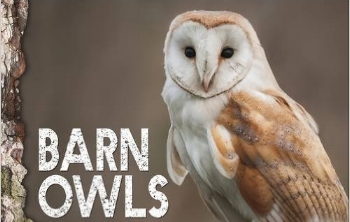
1st Graders Learn the Ways of Barn Owls
First grade students at Independence, Fries and and Grayson Highlands School learned about barn owls in this month’s K-2 Reading Program.
Volunteer Sarah Osborne read the book Barn Owls, and used talons and feathers from the BRDC collection to engage students in the study of these nocturnal raptors.

Galax Students enjoy American Chestnut Celebration
BRDC took eight excited and enthusiastic young ladies from Galax Middle School to learn about the American Chestnut tree and enjoy the festivities.
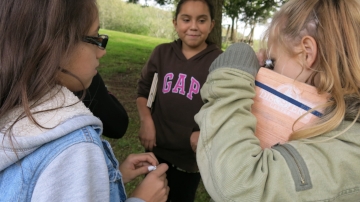
Galax Middle School Studies Leaves, Invasive Plants and the American Chestnut
Students from Galax Middle School travel to Matthews State Forest to learn about the forests of the Blue Ridge.
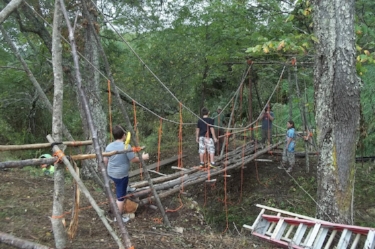
Galax Intersession Suspension Bridge Construction
Galax Middle School Students spent a fun week constructing a suspension bridge!

Whitetop Mountain Fieldtrip
After a week of teaching Galax Middle School kids the fundamentals of compass and map use, and working with another group on basic bird identification, these two outdoor classes hopped on a school bus to rendezvous at Whitetop Mountain for a five mile hike.
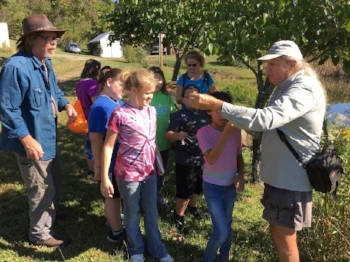
Galax Middle School Explores Dunson Farm
On Saturday, September 24th, an enthusiastic group of Galax Middle School students visited Bill and Margaret Dunson’s Baywood farm just a few miles west of Galax. The Dunsons bought this farm with the intention of converting it from agricultural use to a wildlife resource, with improving bird habitat as the guiding principle. They have returned fields to a more natural sequence of seasonal grasses and wildflowers with an emphasis on native plants. A series of small ponds dot the landscape, some with fish and some without, to demonstrate the impact fish have on various aquatic insects and to illustrate the contrasts.
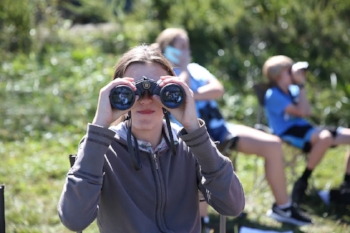
Mahogany Rock Hawk Watch
On September 23, thirty seventh graders from Grayson County Public Schools attended the Mahogany Rock Hawk Watch to experience the niche dedication of Hawk Counters and the mass migration of Broad-winged Hawks. Jim Keighton from the Blue Ridge Birders has been recording the migration of birds of prey for nearly twenty years! Each fall Jim sets up his swivel chair and interpretive displays along the parkway and begins scanning the sky. Not only does he diligently track the migration but he also takes the time to educate the passerby about the migration occurring overhead.

Grayson County K-2 Reading Program
BRDC's newest in-school K-2 Reading Program, began last week with Mrs. Cox and Mrs. Bishop's 1st grade classes at Independence Elementary. Our program volunteer Sarah Osborne read the book Monarch and Milkweed and discussed with students the importance of milkweed to the Monarch Butterfly.

Galax After School Enrichment Kick-off!
Galax Middle School opened its doors to students and their families for the After School Enrichment Program kick-off dinner.
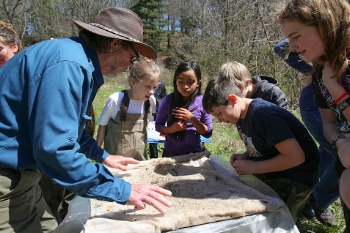
BRDC Partners with Grayson County Schools
We are pleased to announce our partnership with Grayson County Public Schools to connect local youth to the Blue Ridge through hands-on programs with students, providing grade specific SOL’s and STEM learning concepts. The $10,000 award from Grayson County Schools for the 2016-17 school year, supported by matching funds and volunteer support from BRDC, will reach students across the school system and enrich the public school experience through hands-on and interest-driven activities.
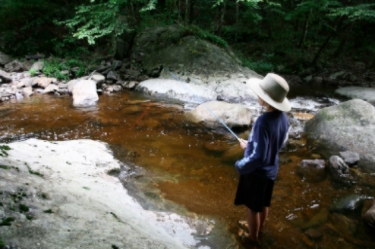
Impromtu Fly Fishing Camp!
At the request of a couple of campers from a previous camp we put together another Fly Fishing Camp to end the summer. Shortened by a day, it became an action packed three day initiation by fire. On the ride to camp we all agreed to treat this as an intensive course rather than the typical shenanigans of a summer camp. The result was one seriously focused group of kids.
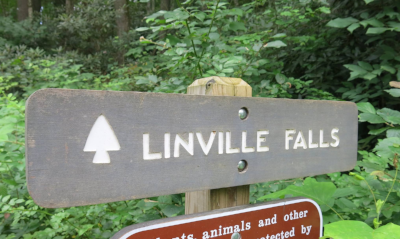
Young Explorers Club Hike to Linville Falls
The Young Explorers Club set out to see Linville Falls today! Not only did they make it there, they hiked EVERY trail in the park covering over 5 moderate to strenuous miles!
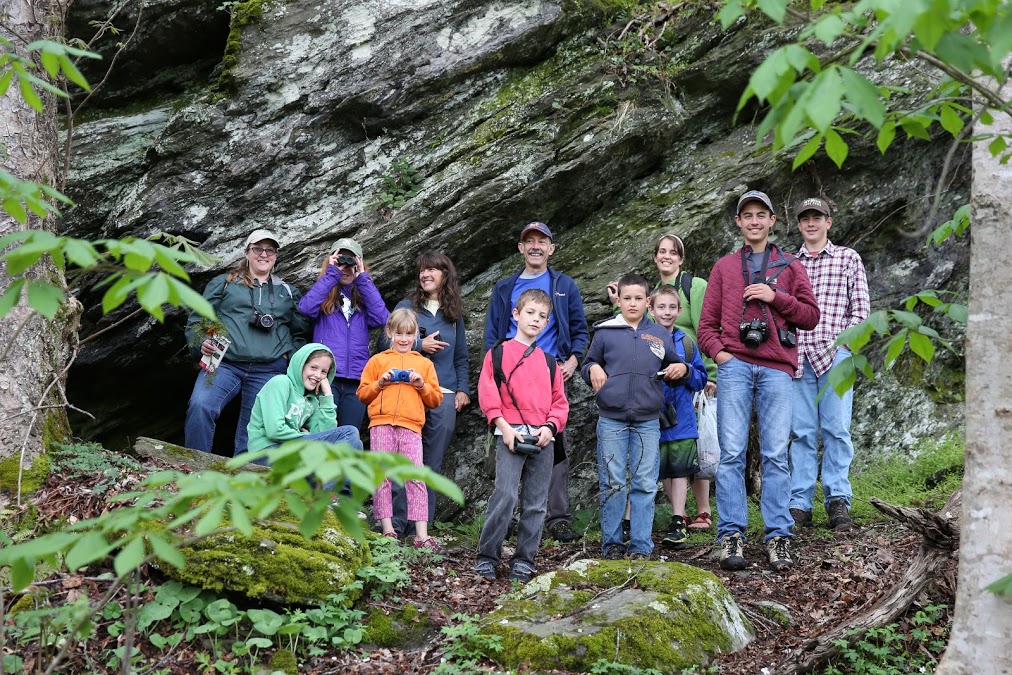
Young Explorers Hit the New River Trail
The Young Explorers Club set out for a wildflower walk on Saturday, April 23rd in search of spring wildflowers and birds.
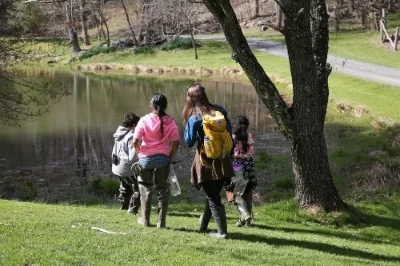
Galax Enrichment Pond Exploration
Galax Middle School students explored a nearby pond last Friday, as part of BRDC's Galax Enrichment program. The students had a great time building salamander traps and searching for frogs- they discovered spring peepers and eastern newts.